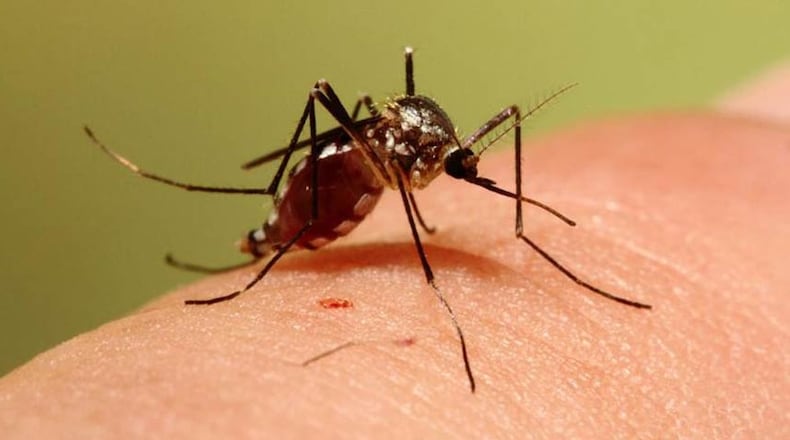Of concern is that La Crosse cannot be detected in mosquito samples and is only discovered once someone experiences symptoms.
Although no cases were reported in the region last year — and none ever in Greene and Montgomery counties — Ohio has the highest number of La Crosse cases in the nation, with 222 reported between 2012 and 2021 for an average of about 20 cases each year, according to the Ohio Department of Health.
Mosquitoes are active from dusk to dawn through October. The only way to reduce the risk of infection from any mosquito-borne illness is to prevent mosquito bites.
“We try to educate people to help them reduce the mosquito population in the area,” said Dan Suffoletto, public information manager for Public Health - Dayton & Montgomery County.
Mosquitoes breed in standing water, and can do so in as small an amount as a pop bottle cap, he said.
Mosquitoes don’t fly a great distance, so making sure there is no standing water in places like children’s sand boxes, clogged gutters, wheelbarrows, old tires, old paint cans or swimming pools that aren’t maintained will “go a long way to protecting you individually,” Suffoletto said.
Counties in Ohio have ongoing mosquito trapping programs in coordination with the ODH to monitor for the types of mosquitoes found and to test for the West Nile virus.
Greene County Public Health also treats for mosquitoes as part of its Integrated Pest Management strategy. It treats wet areas with larvicide to kill mosquitoes before they get their wings and occasionally will spray ultra-low volume adulticide in areas of heavy mosquito activity, according to a released statement from the department.
“In addition to reducing the number of mosquitoes, there are things to reduce mosquito bites,” Suffoletto said.
To help prevent mosquito bites, use repellent, wear long sleeves and pants when outdoors and avoid mosquito-prone areas.
Mosquitoes are not very strong flyers, so Suffoletto said a fan circulating on a porch can help keep them away. He also recommends keeping repellent in the trunk so it’s always on hand for any unplanned times outdoors.
Mosquito facts
- Only female mosquitoes bite people. She needs a blood meal to develop her eggs. The males feed on nectar.
- The female mosquito picks up a disease when she bites an infected animal or bird.
- Once infected, the female mosquito will carry the disease for life.
- People become infected when bitten by an infected mosquito.
- Only a few of the 59 species of mosquitoes in Ohio can transmit disease. However, the diseases that mosquitoes can carry are serious and in Ohio include: Eastern equine encephalitis, La Crosse encephalitis, St. Louis encephalitis and West Nile virus.
- Most people infected with these diseases have no symptoms.
- Some people who are infected have a mild fever, headache and muscle aches that can last up to a week.
- A small number of infected people will develop severe illness requiring hospitalization. These people may have body aches, fever, confusion, weakness, stiff neck, tremors, convulsions and may die.
Source: Ohio Department of Health
About the Author

